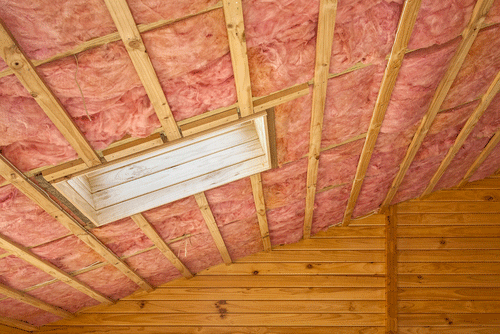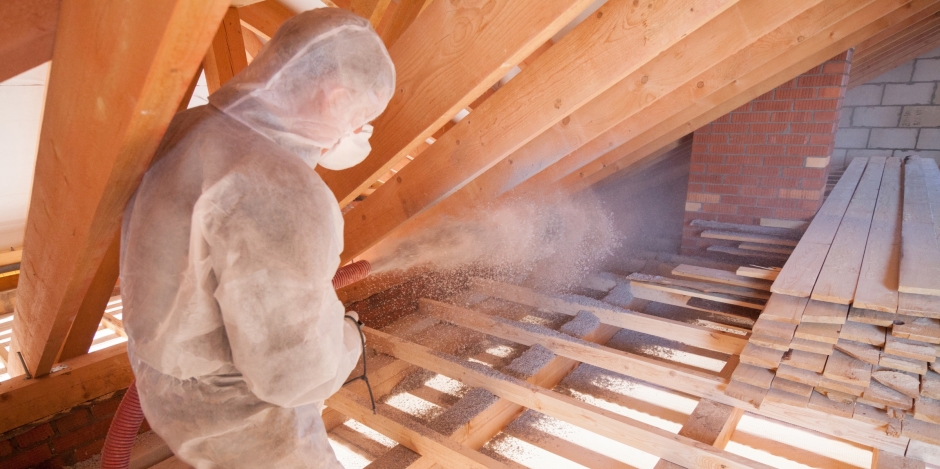Attic Insulation DFW: The Key to Lower Utility Expenses and Improved Home Convenience
Discover the Different Kinds Of Attic Insulation and Their Distinct Benefits for Your Home's Power Efficiency

Fiberglass Insulation
Fiberglass insulation is one of the most typically used products for attic insulation as a result of its exceptional thermal efficiency and cost-effectiveness. Made up of small glass fibers, this product properly catches air, producing an insulating barrier that aids keep consistent indoor temperature levels. Its high R-value per inch makes it particularly reliable at resisting warm transfer, which is critical for energy preservation in homes.
Installment of fiberglass insulation is relatively simple, usually offered in batts or loose-fill kinds, suiting various attic setups. Furthermore, it is non-combustible and immune to dampness, reducing the risk of mold development. This durability adds to its durability, making fiberglass a practical long-lasting investment for house owners.
Additionally, fiberglass insulation is usually manufactured from recycled materials, which improves its eco-friendliness. The material can also add to soundproofing, lessening noise transfer in between areas. While it is vital to use protective gear throughout setup to prevent inflammation from the fibers, the general benefits of fiberglass insulation, including power savings and environmental factors to consider, make it a popular choice for enhancing attic room performance and promoting a comfy living environment.
Spray Foam Insulation
Spray foam insulation is a highly effective alternative for attic room insulation, recognized for its superior air securing and thermal efficiency. This innovative insulation material is made up of a combination of isocyanate and polyol material, which, when integrated, broadens quickly to fill voids and dental caries in the attic space. Its capacity to follow various surfaces guarantees a continuous obstacle against air leaks, significantly reducing warm loss throughout chillier months and heat gain throughout warmer seasons.
Among the crucial benefits of spray foam insulation is its high R-value per inch, which suggests it offers exceptional thermal resistance in a fairly thin application. This is especially advantageous in attic rooms where room is often limited. Furthermore, spray foam can assist lessen dampness buildup, minimizing the danger of mold and mildew and mildew growth, which can be detrimental to both the framework and indoor air top quality.
While the initial price of spray foam insulation may be greater than conventional alternatives, its long-lasting power savings, combined with boosted comfort and boosted home value, make it a rewarding financial investment for house owners seeking improved power effectiveness. Attic Insulation DFW. Overall, spray foam insulation sticks out as a reliable service for optimizing attic room insulation
Cellulose Insulation

Cellulose insulation is a popular selection for attic insulation, primarily composed of recycled paper products treated with fire resistants. This eco-friendly choice is understood for its outstanding thermal efficiency, successfully decreasing warm transfer in both summer season and winter season. The dense make-up of cellulose enables it to fill spaces and voids in attic room areas, giving a smooth obstacle versus air leaks.
Among the significant advantages of cellulose insulation is its capacity to withstand mold and mildew and insects, owing to the fire retardant therapies utilized during manufacturing. In addition, it boasts a high R-value per inch, which translates right into superior energy effectiveness. House owners can expect reduced home heating and air conditioning expenses as an outcome of enhanced insulation.
Installation article source is typically completed through blowing loosened cellulose into the preferred location, enabling a fast and efficient process. This approach likewise decreases disturbance to the existing framework. Cellulose insulation has a reasonably low ecological impact, as its production procedure utilizes recycled materials, adding to sustainable building practices.
Rock Woollen Insulation
Among the numerous choices for attic room insulation, rock wool, likewise called mineral woollen, sticks out due to its impressive thermal and acoustic performance. Made from all-natural or recycled materials, rock wool is produced by melting rock and spinning it into fibers, leading to a product that offers exceptional insulation properties.
Among the significant advantages of rock wool insulation is its high R-value, which shows its efficiency in withstanding warmth circulation. This characteristic not only boosts power effectiveness but likewise adds to preserving a comfy interior temperature level year-round. Furthermore, rock wool is naturally fireproof, making it a safer choice for homes as it can withstand heats without melting or launching hazardous fumes.
In addition, rock woollen insulation stands out in soundproofing capacities, properly decreasing noise transmission between spaces and from outside sources. This makes it an excellent selection for property owners looking for a relaxed living environment. Rock wool is moisture-resistant, assisting to stop mold development and keeping the architectural integrity of the attic area. Overall, rock wool insulation supplies a thorough remedy for enhancing power effectiveness, safety and security, and comfort in property setups.
Glowing Barrier Insulation
Glowing barrier insulation works as a reliable solution for decreasing warmth transfer in attics, particularly in warmer environments. This sort of insulation works by mirroring radiant warmth far from living areas, therefore lowering the amount of warmth that see it here goes into a home throughout hot weather condition - Attic Insulation DFW. Usually made up of a highly reflective product, such as aluminum foil, glowing barriers are mounted in attic rooms, dealing with the roof, where they can obstruct incoming heat from the sunlight
The primary benefit of glowing barrier insulation is its capability to lower air conditioning costs. By showing heat as opposed to absorbing it, glowing barriers can assist maintain a more steady interior temperature, lowering the workload on air conditioning systems. This performance equates into reduced energy costs and boosted convenience for home owners.
Along with power financial savings, glowing barriers can also contribute to enhanced indoor air quality. By reducing warm build-up, they aid reduce humidity levels, which can stop mold and mildew growth and improve general air blood circulation. When installed appropriately, glowing barrier insulation can be an important enhancement to any kind of energy-efficient home, making it a deserving consideration for homeowners wanting to improve their attic insulation technique.
Final Thought
To conclude, understanding the different kinds of attic insulation-- fiberglass, spray foam, cellulose, rock wool, and radiant obstacles-- makes it possible for home owners to make informed decisions concerning power efficiency. Each insulation kind offers unique advantages, such as exceptional thermal resistance, dampness monitoring, and audio depletion. By picking the appropriate insulation material, significant reductions in power prices can be attained, along with enhancements in interior comfort. Inevitably, the right option adds to an extra lasting living environment and promotes total power preservation.

In final thought, comprehending the various types of attic room insulation-- fiberglass, spray go to this website foam, cellulose, rock wool, and glowing barriers-- makes it possible for homeowners to make enlightened decisions regarding energy efficiency.